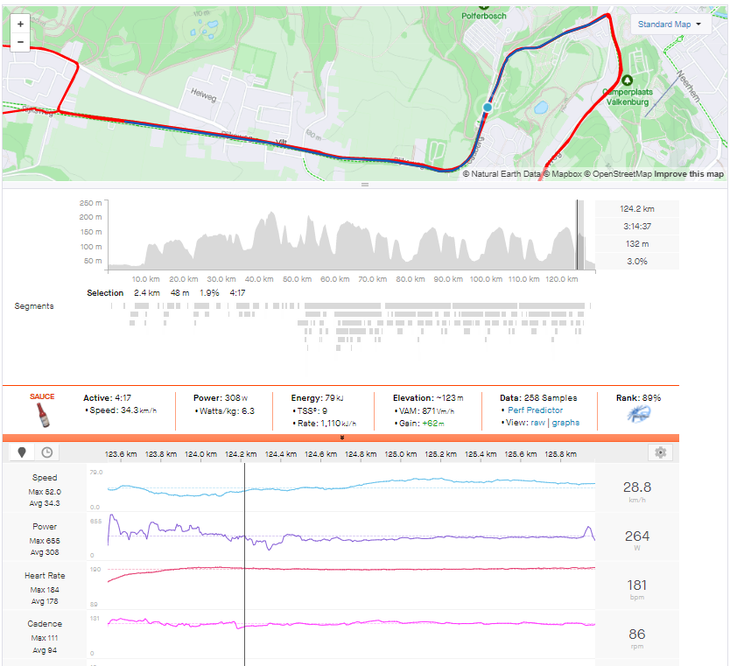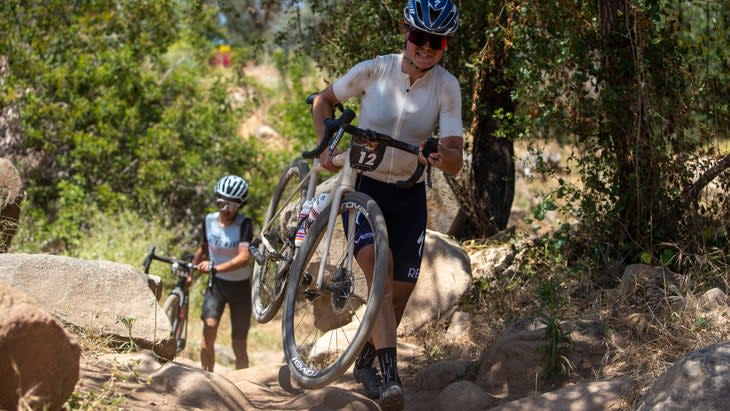Top tips for how to pace your race
This article originally appeared on Velo News
This is probably one of the most common questions asked by athletes getting ready to target their goal event of the season is "How should I pace my race?" The basis of the question seems fairly simple, but the answer has a lot of contingencies to consider and factor in before you base your entire race on a single numerical metric, like power.
Pacing basics
If all things were equal, then you could probably look at the training you did leading up to your event and estimate very closely what you are capable of maintaining for the duration of the event. As most people would imagine, the longer the event, the more conservatively you need to pace at the start. The shorter the event, the more you can push yourself right away.
Also read: Tips for avoiding burnout while training on the bike
Most of the time, we need to be flexible with our pacing plans because we don't want to overestimate our capabilities, but we also don't want to hold ourselves back. When we stand on the start line we get an adrenaline boost and our competitive edge takes over, and these things can give us a real performance boost that enables us to go faster than we may anticipate. In the same way, we don't want to give these emotions full reign, because that adrenaline can only take you so far, and you may find yourself up the creek without a paddle.

For these reasons, I think it's really important to stay calm and intellectual at the start of an event. Use that adrenaline boost, but continually check in with yourself. Do I feel challenged? Is this pace manageable? These are good questions to ask yourself repeatedly throughout the event.
For people looking for exact numbers to work with, start by looking at your functional threshold power (FTP). If you don't know what your FTP is then you may want to do a test a couple of weeks before your race. Theoretically, your FTP is the power that you can hold for one hour, so if your race is one hour, then your FTP give or take three to five percent is a great place to start. Once your race is one to two hours in duration then you are going to want to aim for sweet spot pacing (approximately 88-95 percent of your FTP). From the two- to six-hour race times: You should aim for tempo intensity (approximately 75-87 percent of FTP), and races lasting for more than six hours will likely put you in a base or endurance zone.
The crux of pacing though, is that all things are usually not equal.
Terrain considerations
One of the most challenging elements to consider with pacing is the terrain. Sometimes terrain will dictate your pace, whether you like it or not. If a hill is so steep that you either have to exceed your pacing metrics or walk, then it's likely ok that you give it a harder effort to get to the top of the hill. If the trail is wet and slippery and you literally cannot safely hit your numbers, then whatever you are capable of will still be your best effort on the day.

One of the worst things you can do is let the terrain derail you, or unravel you mentally because your power or heart rate zones aren't matching up. If your course has rolling hills and you will be coasting down the backside of many of the hills, then you should not sprint and power up the front side of the hill to make up for that power lost. In the same way, you may be able to go slightly harder on the climbs since some of the time you are spending will be coasting.
In general, if the climb is fewer than five minutes long, then as long as you don't go wild, I think that slight deviations from your pacing plan are okay. Once a climb or effort is greater than five minutes, you need to consider how deep of a hole you are digging. Additionally, if you start making short power spikes, they may contribute to derailing to your race. There's no magic formula; you really have to maintain as steady of power as possible, without letting the little things get to you.
Environmental considerations
Other considerations to make are environmental conditions. You cannot be so strict with your pacing that you neglect to acknowledge environmental conditions such as extreme heat, extreme cold, or altitude. These elements will impact everyone so it's better to adapt from the start rather than the conditions forcing your hand.
Tactical considerations
The final consideration with pacing is one that I see often confused or misunderstood. In order to make an informed decision about your pacing strategy, you also need to have an informed decision about your placement goal or where you will stack up in the field. If you have no idea, where you will finish place-wise then it's best to stick to your own plan.
That said, if you have reason to believe that you can place in the front, then you will need to be brave enough to stay in the front group. Here's a secret: Many pro races start much faster than we intend to hold for the entire race, but the front of the race creates intensity to whittle down the group and create separation, and to see who is brave enough to go hard. If you want to win, then you cannot miss the front group because, depending on the course, it may be unlikely that you will be able to close a gap to the front group of people working together once a selection is made. That also means you need to train those higher intensity efforts so that making the selection isn't shocking to your system.
If your goal is not to win the race, then you want to settle into your own pace in order to have your own best time on course and to pass all of the people who went out too fast and got dropped from the front. If you attempt to go out with the front, get dropped, then explode due to doing too big of an effort too early, that is a recipe to have a slower race than you otherwise would if you just paced it from the start.
The bottom line
The bottom line is you never know until you try. Don't be afraid to give it a go. One of the reasons I always recommend signing up for a few races before your main event is to try pacing strategies. See what you're capable of!
For exclusive access to all of our fitness, gear, adventure, and travel stories, plus discounts on trips, events, and gear, sign up for Outside+ today.

